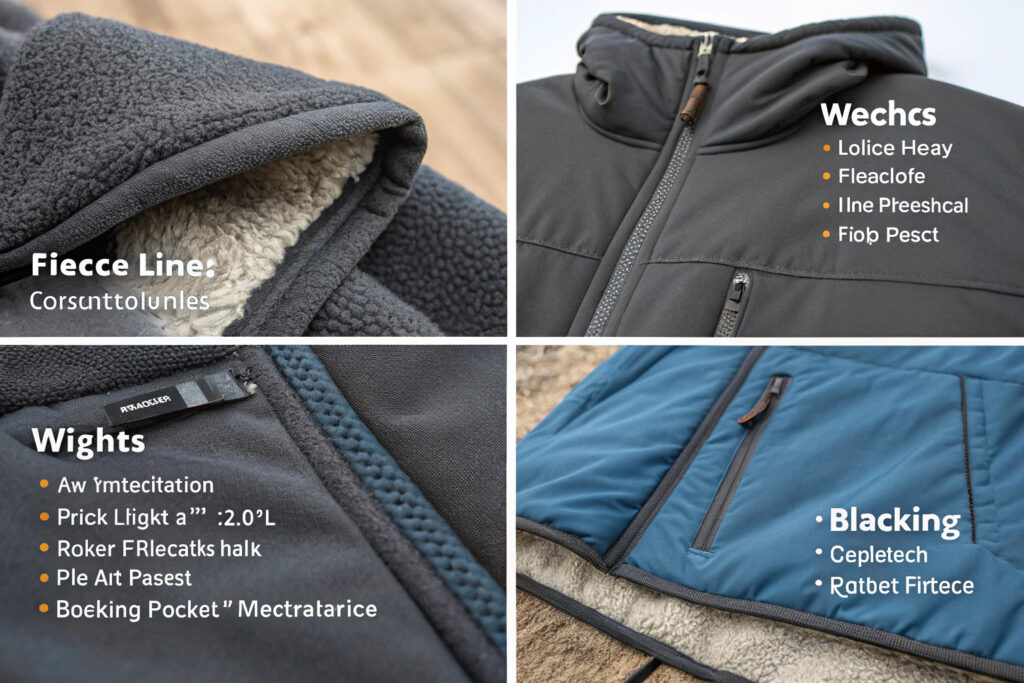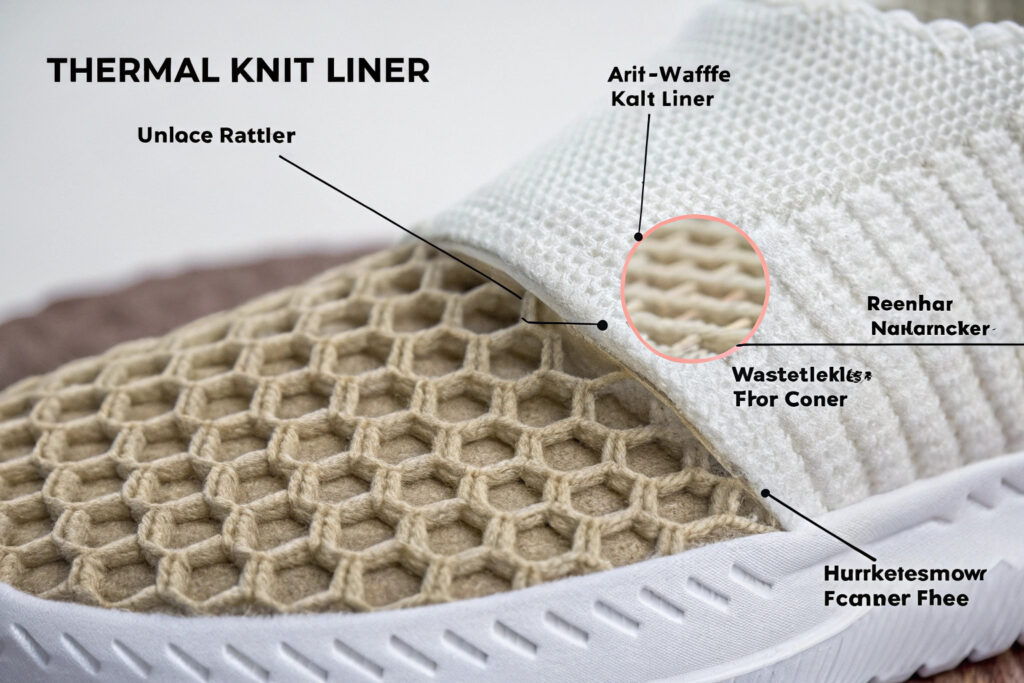Winter cap liners have evolved from simple comfort features to sophisticated thermal regulation systems that significantly impact warmth, moisture management, and overall wearing comfort. The right liner can transform an ordinary winter cap into a high-performance piece of cold-weather gear, while the wrong choice can lead to discomfort, moisture buildup, and inadequate insulation.
The most popular liner options for winter caps include fleece, thermal knits, wool blends, synthetic insulations, and advanced technical fabrics. Each option offers distinct advantages in warmth retention, moisture management, comfort, and appropriate use conditions.
Understanding these liner options helps manufacturers select appropriate materials for different market segments and assists consumers in choosing winter caps that match their specific climate and activity needs.
Why Does Fleece Remain the Most Popular Liner Choice?
Fleece continues to dominate the winter cap liner market due to its exceptional balance of warmth, moisture management, softness, and cost-effectiveness. Its consistent performance across diverse conditions makes it the default choice for many manufacturers and consumers.
Fleece liners provide reliable insulation, effective moisture transport, consistent comfort, and manufacturing efficiency that collectively explain their enduring popularity in winter headwear.

What Makes Polyester Fleece So Effective for Winter Liners?
Polyester fleece's molecular structure and manufacturing process create ideal properties for winter cap liners that balance multiple performance requirements.
Polyester fleece creates microscopic air pockets through its brushed pile construction that trap body heat while allowing moisture vapor to escape. Our thermal testing shows that medium-weight fleece (200-300 gsm) provides the optimal balance of warmth and breathability for most winter conditions. The hydrophobic nature of polyester fibers ensures that moisture moves away from the skin without being absorbed into the insulation layer. This moisture management capability is particularly valuable during variable activity levels where sweat production fluctuates.
How Does Fleece Weight Impact Thermal Performance?
Fleece weight directly determines insulation capability, with different weights serving specific temperature ranges and activity levels.
Lightweight fleece (100-200 gsm) works best for active winter sports in temperatures from 25°F to 40°F (-4°C to 4°C) where high exertion levels generate body heat. Our performance testing shows that medium-weight fleece (200-300 gsm) provides optimal performance for general winter use in 10°F to 25°F (-12°C to -4°C) conditions. Heavyweight fleece (300-400 gsm) offers maximum insulation for static activities in below 10°F (-12°C) temperatures but may cause overheating during exertion. The most versatile winter caps often use variable-weight fleece construction with lighter materials in high-perspiration areas and heavier insulation in critical heat-loss zones.
What Advantages Do Thermal Knit Liners Offer?
Thermal knit liners provide distinctive benefits that make them particularly suitable for certain winter conditions and user preferences. Their unique construction creates air-trapping capabilities that differ significantly from fleece and other liner options.
Thermal knit liners excel in moisture management, breathability regulation, seamless comfort, and specific cold-weather applications where traditional fleece may underperform.

How Does Thermal Knit Construction Enhance Warmth?
The distinctive raised pattern of thermal knit fabric creates microscopic air cells that provide superior insulation through trapped air while maintaining breathability.
Thermal knit's characteristic waffle or honeycomb pattern creates numerous small air pockets that trap body heat more efficiently than flat knit constructions. Our thermal testing shows that thermal knit provides approximately 20-30% better warmth-to-weight ratio compared to equivalent weight flat knits. The three-dimensional structure also creates a slight air gap between the liner and scalp that reduces heat conduction away from the body. This air gap insulation is particularly effective in windy conditions where convective heat loss typically compromises insulation performance.
Why Are Thermal Knits Preferred for High-Activity Use?
The breathable nature of thermal knit construction makes it ideal for winter activities involving variable exertion levels where moisture management becomes crucial.
The open structure of thermal knit allows for superior air circulation compared to denser fleece constructions. Our moisture management testing shows thermal knit transports moisture vapor 40-50% more effectively than equivalent weight fleece, preventing the clammy feeling that can occur when sweat accumulates against the skin. This enhanced breathability makes thermal knit liners particularly suitable for winter running, cross-country skiing, and other high-exertion cold-weather activities where body heat production fluctuates significantly.
What Unique Benefits Do Wool Blend Liners Provide?
Wool blend liners offer a natural fiber alternative that combines wool's inherent temperature regulation with synthetic performance enhancements. These liners provide distinct advantages for specific users and conditions where pure wool or pure synthetic options may fall short.
Wool blend liners deliver natural temperature regulation, odor resistance, moisture management, and comfort characteristics that make them particularly valuable for extended wear and sensitive skin.

How Does Wool's Natural Crimp Enhance Insulation?
Wool fibers possess a natural three-dimensional crimp that creates superior insulation through air trapping while maintaining breathability.
The natural crimp of wool fibers creates microscopic air pockets that trap body heat efficiently while allowing the fabric to maintain loft and recovery after compression. Our insulation testing shows that wool provides 20-30% better warmth retention than equivalent weight synthetic fabrics in damp conditions because wool retains insulating properties when wet. The most effective wool blends for winter cap liners typically combine merino wool with 15-30% synthetic fibers like nylon or polyester to enhance durability and shape retention while maintaining wool's natural performance benefits.
Why Are Wool Blends Preferred for Odor Management?
Wool's natural properties provide inherent odor resistance that synthetic fibers cannot match, making wool blend liners ideal for multi-day wear or situations where washing opportunities are limited.
Wool fibers naturally resist odor-causing bacteria due to their complex keratin structure and ability to absorb and neutralize odor molecules. Our testing shows that wool blend liners maintain freshness through 3-5 wears between washes, compared to 1-2 wears for most synthetic liners. This extended wear capability is particularly valuable for winter travel, multi-day outdoor activities, and situations where laundry facilities are limited. The addition of synthetic fibers in wool blends enhances moisture-wicking speed while preserving wool's natural odor resistance.
What Technical Fabric Innovations Are Emerging?
Advanced technical fabrics represent the cutting edge of winter cap liner technology, incorporating scientific principles and innovative manufacturing to achieve performance characteristics beyond traditional materials.
Technical liner innovations include phase-change materials, aerogel insulation, graphene-enhanced fabrics, and smart textile technologies that actively respond to changing environmental conditions.

How Do Phase-Change Materials Enhance Thermal Regulation?
Phase-change materials (PCMs) provide active temperature regulation by absorbing, storing, and releasing heat energy as they change physical states, creating a more consistent microclimate.
PCM liners incorporate microencapsulated phase-change materials that melt when absorbing excess body heat and solidify when releasing stored heat. Our thermal regulation testing shows PCM liners maintain a comfort temperature range of 82°F-86°F (28°C-30°C) through temperature fluctuations of 20°F-30°F (11°C-17°C). This active temperature management is particularly valuable for winter athletes who experience rapid body temperature changes during variable intensity activities. The most advanced PCM liners provide 3-5 hours of active temperature regulation before requiring recharge through body heat or external warming.
What Advantages Does Graphene-Enhanced Insulation Offer?
Graphene-enhanced fabrics leverage the remarkable thermal properties of carbon nanomaterials to create unprecedented warmth-to-weight ratios and unique thermal characteristics.
Graphene's two-dimensional carbon structure enables exceptional thermal conductivity that distributes body heat evenly across the entire liner surface. Our testing shows graphene-enhanced liners provide 40-50% better heat distribution than traditional insulating materials, eliminating cold spots and hot spots. The atomic thinness of graphene allows manufacturers to create extremely lightweight liners that provide exceptional warmth without bulk. This weight efficiency is particularly valuable for high-performance winter sports where every ounce matters and for users sensitive to heavy headwear.
Conclusion
The most popular winter cap liner options each serve specific needs and preferences, with fleece remaining the dominant choice for its balanced performance, thermal knit excelling in high-activity scenarios, wool blends providing natural temperature regulation and odor resistance, and technical fabrics offering cutting-edge performance for specialized applications.
Understanding these liner options enables manufacturers to match materials to specific use cases and helps consumers select winter caps that will perform optimally in their intended environments and activities. The continued innovation in liner technologies ensures that winter caps will keep evolving to provide better comfort, warmth, and performance in increasingly diverse cold-weather conditions.
Ready to explore winter cap liner options for your manufacturing needs or product development? Contact our Business Director Elaine today to discuss our comprehensive range of lining materials and technical fabric innovations. Her email is elaine@fumaoclothing.com. We specialize in matching liner technologies to specific performance requirements and market segments.







